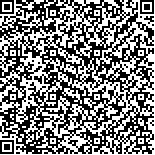| 引用本文: |
刘玉芳,阳国彬,王文龙.基于数据挖掘的国医大师梅国强治疗痞满用药规律研究[J].湖南中医药大学学报,2021,41(10):1574-1581[点击复制] |
|
| |
|
|
| 本文已被:浏览 3490次 下载 1808次 |
| 基于数据挖掘的国医大师梅国强治疗痞满用药规律研究 |
| 刘玉芳,阳国彬,王文龙 |
| (襄阳市中医医院, 湖北 襄阳 441000;襄阳市中医医院, 湖北 襄阳 441000;国医大师梅国强传承工作室, 湖北 武汉 430065;杭州市肿瘤医院, 浙江 杭州 310002) |
| 摘要: |
| 目的 运用数据挖掘技术研究国医大师梅国强治疗痞满的临床用药规律,为痞满病症临床治疗提供经验指导。方法 在湖北中医药大学国医堂名老中医经验传承工作室收集自2011年12月至2019年5月梅国强教授治疗痞满病症的病案资料,医案共1 225则,分类提取纳入的病案数据,并对其作规范化处理,对病案中症状、处方用药作关联分析,对高频(频数≥47)用药作聚类分析。结果 痞满以腹胀、呕逆、心烦、苔黄腻、腹痛拒按、便秘等为常见症状。常用中药有炙甘草、桂枝、半夏、大黄、大枣、黄连、黄芩、人参、干姜、枳实、白术、生姜、厚朴等。发现的关联规则有:(1)药物-药物。黄连常与黄芩联用,人参、炙甘草常与干姜联用,白术常与桂枝联用等。(2)证-症状。痰饮内停证与脘腹痞闷而胀-气上冲咽-心烦-呃逆-舌胖大-苔厚腻-寸脉浮相关;水饮内停证与胃脘痞塞-头痛-汗出-干呕-呕吐-腹泻-胸满-短气-舌苔白滑-脉沉弦相关;热痞与脘腹满闷-按之较软-心烦-口渴-舌红-苔黄-脉浮相关等。(3)证-药物。痰饮内停证与半夏-瓜蒂-赤小豆-茯苓-枳实相关;水饮内停证与泽泻-大枣-甘遂-京大戟-白术相关;热痞与大黄-厚朴-黄芩-半夏-黄连相关等。结论 梅国强教授对痞满病症的治疗以调畅气机为本,擅用辛温以助脾升运、苦寒以助胃通降。其治疗痞满法崇仲景,擅用经方,配伍灵活,寒温并用,理法互参,临床经验值得学习和借鉴。 |
| 关键词: 痞满 伤寒论 梅国强 数据挖掘 关联规则 聚类分析 |
| DOI:10.3969/j.issn.1674-070X.2021.10.018 |
| 投稿时间:2021-05-24 |
| 基金项目:国家中医药管理局“梅国强国医大师传承工作室”建设项目(国中医药办人教函〔2018〕119号);杭州市卫生科技计划项目(2017A59);浙江省中医药管理局项目(2018ZB091)。 |
|
| Rules of Medication for the Treatment of Distention and Fullness by the Master of Traditional Chinese Medicine Mei Guoqiang Based on Data Mining |
| LIU Yufang,YANG Guobin,WANG Wenlong |
| (Xiangyang Hospital of Traditional Chinese Medicine, Xiangyang, Hubei 441000, China;Xiangyang Hospital of Traditional Chinese Medicine, Xiangyang, Hubei 441000, China;Chinese Medicine Master Mei Guoqiang Inheritance Studio, Wuhan, Hubei 430065, China;Hangzhou Cancer Hospital, Hangzhou, Zhejiang 310002, China) |
| Abstract: |
| Objective To explore the clinical medication rules of the national medical master Mei Guoqiang by using data mining technology in treating distention and fullness. Methods 1 225 medical records of professor Mei Guoqiang in the Chinese Medicine Master Mei Guoqiang Inheritance Studio of The National Medical Hall of Hubei University of Chinese Medicine from December 2015 to May 2019 were collected. Medical records were extracted and normalized. Association analysis was performed for symptoms and prescription drugs in medical records, and cluster analysis was performed for high frequency drugs (frequency ≥ 47). Results The clinical symptoms of distention and fullness were abdominal distension, vomiting, upset, moss yellow greasy, abdominal pain refusing to press and constipation. The high frequency traditional Chinese medicine was Zhigancao (Glycyrrhizae Radix Et Rhizoma Praeparata Cum Melle), Guizhi(Cinnamomi Ramulus), Banxia (Pinelliae Rhizoma), Dahuang (Rhei Radix Et Rhizoma), Dazao (Jujubae Fructus), Huanglian (Coptidis Rhizoma), Huangqin (Scutellariae Radix), Renshen (Ginseng Radix Et Rhizoma), Ganjiang (Zingiberis Rhizoma), Zhishi (Aurantii Fructus Immaturus), Baizhu (Atractylodis Macrocephalae Rhizoma), Shengjiang (Zingiberis Rhizoma Recens), Houpo (Magnoliae Officinalis Cortex), etc. The correlation rules were as follows. (1) Drug-drug rules:Huanglian (Coptidis Rhizoma)-Huangqin(Scutellariae Radix), Renshen (Ginseng Radix Et Rhizoma), Zhigancao (Glycyrrhizae Radix Et Rhizoma Praeparata Cum Melle)-Ganjiang (Zingiberis Rhizoma), Baizhu (Atractylodis Macrocephalae Rhizoma)-Guizhi (Cinnamomi Ramulus), etc. (2) Syndrome-clinical symptoms rules:phlegm retention syndrome-epigastric fullness and distention-Qi rushing to the throat-upset-hiccup-tongue fat, thick-moss greasy thick-inch pulse floating; syndrome of stopping drinking in water-epigastric congestion-headache-perspiration-retching-vomiting-diarrhea-sensation of fullness in the chest-shortness of breath-tongue coating white smooth-pulse heavy string; heat glomus-epigastric fullness-soft-upset-thirsty-redness of tongue-yellow tongue coating-floating pulse, etc. (3) Syndrome-drug rules:phlegm retention syndrome-Banxia (Pinelliae Rhizoma), Guadi (Calyx Melo), Chixiaodou (Vignae Semen), Fuling (Poria), Zhishi (Aurantii Fructus Immaturus); syndrome of stopping drinking in water-Zexie (Alismatis Rhizoma), Dazao (Jujubae Fructus), Gansui (Kansui Radix), Jingdaji (Euphorbiae Pekinensis Radix), Baizhu (Atractylodis Macrocephalae Rhizoma); heat glomus-Dahuang (Rhei Radix Et Rhizoma), Houpo (Magnoliae Officinalis Cortex), Huangqin (Scutellariae Radix), Banxia (Pinelliae Rhizoma), Huanglian (Coptidis Rhizoma), etc. Conclusion Professor Mei Guoqiang's treatment of distention and fullness is based on regulating Qi, and he is good at using pungent-warm to help the spleen lift and cold to help the stomach to pass down. His treatment of distention and fullness according to Zhang Zhongjing, and he is good at using meridian, flexible compatibility, using both cold and temperature, and participating in theory and method, the clinical experience is worth learning and reference. |
| Key words: distention and fullness Treatise on Febrile Diseases Mei Guoqiang data mining association rules cluster analysis |
|

二维码(扫一下试试看!) |
|
|
|
|




